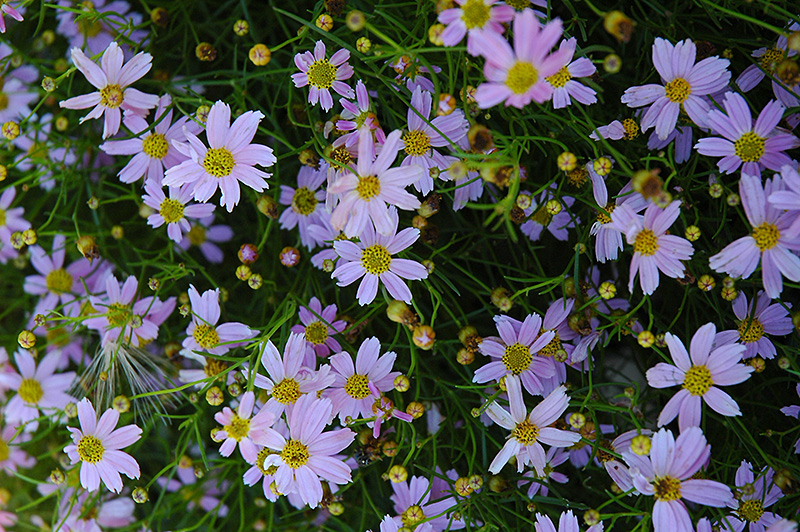Height: 24 inches
Spread: 24 inches
Sunlight:
![]()
Hardiness Zone: 4a
Description:
A beautiful variety with a long, continuous blooming season; dense, bushy mounds of ferny green foliage are covered in blush pink, daisy-like blooms from early summer to fall; excellent as groundcover, borders or in beds; deadhead to promote new blooms
Ornamental Features
Pink Tickseed is smothered in stunning shell pink daisy flowers with yellow eyes at the ends of the stems from early summer to early fall. The flowers are excellent for cutting. Its ferny leaves remain green in color throughout the season.
Landscape Attributes
Pink Tickseed is an open herbaceous perennial with a mounded form. It brings an extremely fine and delicate texture to the garden composition and should be used to full effect.
This plant will require occasional maintenance and upkeep, and is best cleaned up in early spring before it resumes active growth for the season. It is a good choice for attracting butterflies to your yard, but is not particularly attractive to deer who tend to leave it alone in favor of tastier treats. Gardeners should be aware of the following characteristic(s) that may warrant special consideration;
- Spreading
Pink Tickseed is recommended for the following landscape applications;
- Mass Planting
- General Garden Use
- Naturalizing And Woodland Gardens
Planting & Growing
Pink Tickseed will grow to be about 24 inches tall at maturity, with a spread of 24 inches. Its foliage tends to remain dense right to the ground, not requiring facer plants in front. It grows at a medium rate, and under ideal conditions can be expected to live for approximately 10 years. As an herbaceous perennial, this plant will usually die back to the crown each winter, and will regrow from the base each spring. Be careful not to disturb the crown in late winter when it may not be readily seen!
This plant should only be grown in full sunlight. It does best in average to evenly moist conditions, but will not tolerate standing water. It is not particular as to soil type or pH. It is somewhat tolerant of urban pollution. This species is native to parts of North America. It can be propagated by division.







